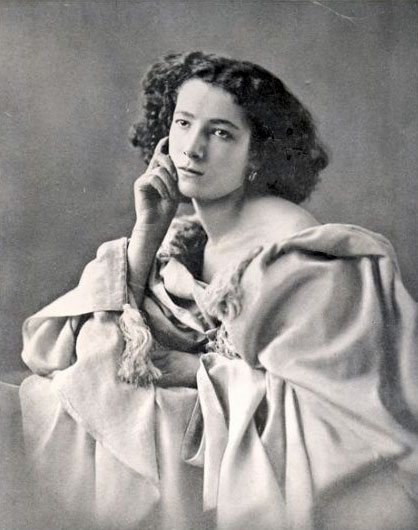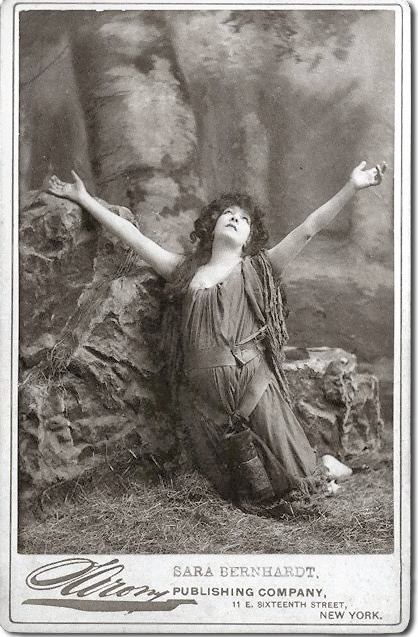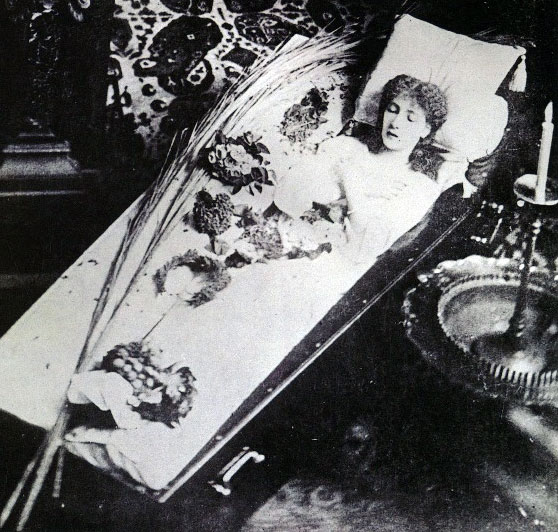by Andrew Boyd
Today, talent or celebrity? The University of Houston's College of Engineering presents this series about the machines that make our civilization run, and the people whose ingenuity created them.
What makes an actor popular? Is it the ability to deliver moving performances? Or is it the person, the celebrity? Nowhere is the question more pronounced than in the woman many hailed as "the most famous actress the world has ever known."

Sarah Bernhardt was born in the early 1840s in Paris, France. Her father is unknown. Her mother was a courtesan for the well-to-do, and trained her daughter in the art of alluring men for a living. Bernhardt proved to be a melodramatic child, a trait she demonstrated throughout her life.

One of her mother's lovers, a half brother of Napoleon III, arranged for Bernhardt to gain entry into the French national theater company. Bernhardt slowly gathered a following, but critical reviews were mixed. Victor Hugo loved her, both on stage and in the boudoir. George Bernard Shaw did not, writing that her acting was "childishly egotistical" and commenting, "she does not enter into the leading character: she substitutes herself for it." Regardless of what the critics said, the public adored the lovely young woman.
Bernhardt displayed an off-stage quirkiness that only added to her mystique. She traveled with an entourage of wild animals, including a cheetah, a wolf, and a boa-constrictor. An alligator named Ali-Gaga died after being fed too much milk and champagne. Bernhardt liked to wear a stuffed, dead bat. Most famously, she traveled with a coffin where she claimed to sleep. A widely circulated photo of a peaceful Bernhardt lying in a coffin, eyes closed, draped with flowers, no doubt served to fuel public curiosity.

Her list of alleged lovers was both long and illustrious. Perhaps her most famous was the Prince of Wales, who later ascended to the throne as King Edward VII.
Bernhardt traveled the world: Europe, the Americas, Australia. And as she traveled, her throngs of admirers grew. At her death in 1923, almost a half-million people lined the streets of Paris to bid good-bye to their "Divine Sarah."
Bernhardt wrote memoirs, but they're largely discounted as works of fantasy. Efforts to capture her essence are challenging, since her life's not easily distilled. Was she troubled? Yes. Unhappy? Not outwardly. Talented? The jury's split. She was driven, an adept self-promoter, and in constant need of attention. And she had a vast following of enamored fans, packing theaters throughout the world to see her perform serious dramatic roles — in French. Above all, Sarah Bernhardt was a celebrity, a pioneer whose example would be imitated by generations of popular entertainers to come.
I'm Andy Boyd at the University of Houston, where we're interested in the way inventive minds work.
Notes and references:
R. Gottlieb. Sarah: The Life of Sarah Bernhardt. New Haven, Connecticut: Yale University Press, 2010.
O. Laing. 'Sarah: The Life of Sarah Bernhardt by Robert Gottlieb — review.' The Guardian Observer, October 24, 2010. See also: http://www.guardian.co.uk/books/2010/oct/24/sarah-bernhardt-robert-gottlieb-review. Accessed August 30, 2011.
G. Robb. 'The Divine Sarah.' New York Review of Books, October 14, 2010. See also: https://www.nybooks.com/articles/archives/2010/oct/14/divine-sarah/. Accessed August 30, 2011.
Sarah Bernhardt. From the Web site of the Encyclopedia Britannica: https://www.britannica.com/EBchecked/topic/62517/Sarah-Bernhardt. Accessed August 30, 2011.
All pictures are in the public domain as a result of expired copyrights.
This episode was first aired on September 1st, 2011